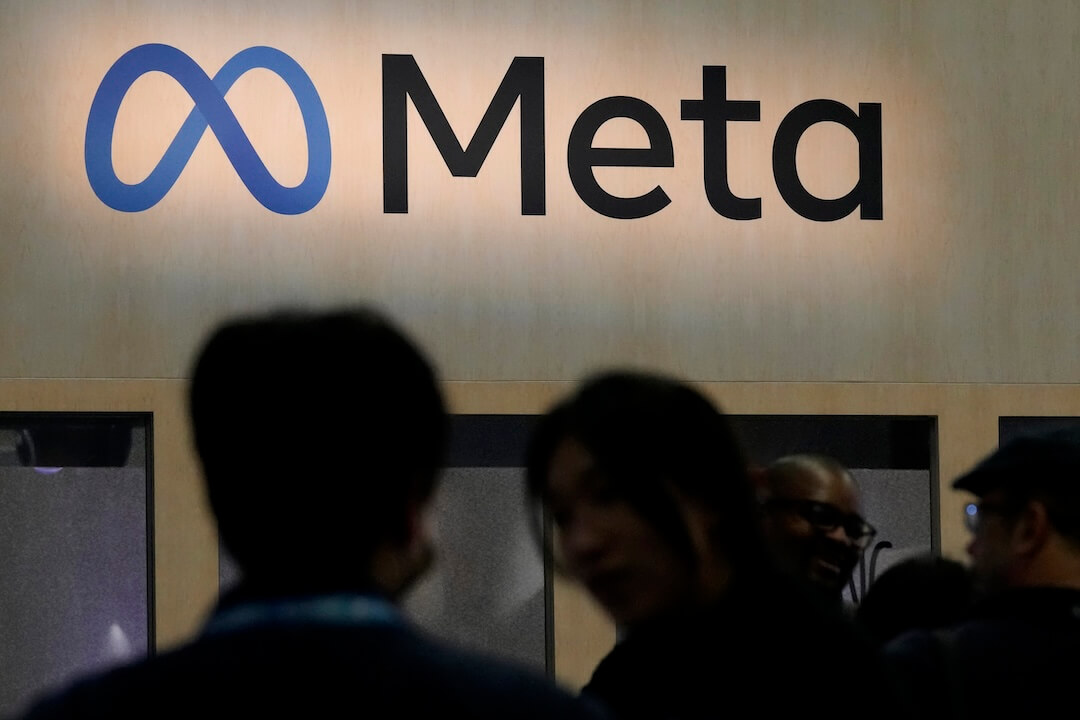 Covering COVID-19 is a daily Poynter briefing of story ideas about the coronavirus and other timely topics for journalists, written by senior faculty Al Tompkins. Sign up here to have it delivered to your inbox every weekday morning.
Covering COVID-19 is a daily Poynter briefing of story ideas about the coronavirus and other timely topics for journalists, written by senior faculty Al Tompkins. Sign up here to have it delivered to your inbox every weekday morning.
A special U.S. Food and Drug Administration committee of experts voted 17-4 in favor of recommending Pfizer’s COVID-19 vaccine be approved for emergency use. One member abstained. The committee voted on this narrow question:

(FDA)
The committee members did not agree on whether 16-year-olds and 17-year-olds should get the vaccine. That was the main reason for the “no” votes. Some committee members said the FDA should wait for more data on that age group and that there is not much urgency to make a decision on the youngest age groups because they are the least susceptible age to get infected or to get sick if they do get infected. On top of that, they would not be eligible for vaccines for several months when supplies become more available.
The full FDA has to approve the advisory committee’s recommendation for emergency use. The New York Times says the FDA “is expected to grant an emergency use authorization on Saturday, according to people familiar with the agency’s planning, though they cautioned that last-minute legal or bureaucratic requirements could push the announcement to Sunday or later.”
Then, on Sunday, the Centers for Disease Control and Prevention would have to approve recommendations on who should get the vaccines first. The drugs will be shipped within a matter of hours after the CDC’s approval, meaning the first U.S. vaccines could be administered Monday or Tuesday.
How concerned should people with anaphylaxis be about the Pfizer vaccine?
During the Thursday FDA advisory committee meeting, Dr. Paul Offit, a vaccine expert (who will be with us on our Covering Vaccines webinar on Monday) raised the question of the allergic reactions that two people in Britain have had to the vaccine. British health authorities responded to those reactions Thursday morning with a warning that people with anaphylaxis (a severe allergic reaction) should not take the vaccine. British authorities say food allergies do not count.
Why didn’t the U.S. drug trial surface any severe allergic reactions? USA Today quotes Moncef Slaoui, co-head of Operation Warp Speed, as saying the U.S. trials kept out subjects who have had severe allergic reactions.
During the advisory committee hearing, Marion Gruber, director of the Office of Vaccines Research and Review at the FDA, said that the FDA had considered the possibility that there could be allergic reactions even before the U.K. cases arose this week.
In fact, she said, some weeks ago the FDA planned to add language to the Emergency Use Authorization that anywhere the vaccine is administered should have the equipment and supplies necessary for dealing with a severe allergic reaction.
Dr. Offit points out that millions of Americans carry EpiPens now because they are so susceptible to allergic reactions. Offit says he wants Pfizer to recruit people with known allergies to participate in specific drug trials to get more information about allergic reactions to the vaccine because, he says, “This is not going to die, there are hundreds of millions of people” who will be concerned about the reports of allergic reactions. Offit says he was not concerned enough about the allergic reaction to delay the release of the drug but says a new study is needed to give the public confidence.
The FDA says the vaccine will in all likelihood come with an advisory that people who are susceptible to frequent allergic reactions should hold off for now. Keep in mind that tens of thousands of people who have gotten this vaccine have had no such reaction. Two people have.
[the_ad id=”667826″]
What about children and breastfeeding and pregnant women?

A pregnant woman holds her belly as she waits in line for groceries with hundreds during a food pantry for those in need due to the COVID-19 virus outbreak, at St. Mary’s Church in Waltham, Mass., Thursday, May 7, 2020. (AP Photo/Charles Krupa)
The Pfizer trials did not include children or breastfeeding or pregnant women and, because of that, none of those groups should get the vaccines at this point. The drug trials to study the proper levels of vaccine for children are underway but probably won’t be approved and available until mid to late 2021.
If you are vaccinated, can you still spread the virus?
The Pfizer vaccine is quite good at keeping people from getting sick. But we do not know whether a person might be infected with the coronavirus and show no symptoms because they have been vaccinated but still pass it along to others.
Pfizer’s vaccine and the soon to be considered Moderna vaccine, as you know, have been shown to prevent COVID-19 infections in more than 90% of the patients who took them. But will those vaccines be able to prevent a person from spreading the virus? So far, only one of the leading vaccine candidates has shown an ability to do that, and that is the AstraZeneca vaccine. Even that drug’s ability to prevent the spread is limited, and the AstraZeneca drug is not as successful as the Pfizer and Moderna drugs at preventing infection.
The New York Times talked with experts who said it is going to be important for people to continue wearing masks, even those who have been vaccinated:
If vaccinated people are silent spreaders of the virus, they may keep it circulating in their communities, putting unvaccinated people at risk.
“A lot of people are thinking that once they get vaccinated, they’re not going to have to wear masks anymore,” said Michal Tal, an immunologist at Stanford University. “It’s really going to be critical for them to know if they have to keep wearing masks, because they could still be contagious.”
Some studies have suggested that even people with no symptoms can have high amounts of coronavirus in their nose, noted Dr. Yvonne Maldonado, who represents the American Academy of Pediatrics at meetings of the federal Advisory Committee on Immunization Practices. The first person confirmed to be reinfected with the coronavirus, a 33-year-old man in Hong Kong, also did not have symptoms, but harbored enough virus to infect others.
What about all of the other drugs and vaccines in development?
Here is a guide to the dozens of vaccines and therapeutics that are under development right now. STAT News sorted the list in order of how close they could be to approval, starting with a treatment in phase 3 trials, followed by others in phase 1 studies and then preclinical development. Of course, there are always bumps in the road and not all of the drugs will make it to market.
The only one-dose vaccine in phase 3 trials is shrinking its study size
Johnson & Johnson is one pharmaceutical company that is trying to produce a COVID-19 vaccine that would only require one shot, not two like Pfizer and Moderna’s vaccine. But the very pandemic the drug is trying to curb is changing the way the drug trial will run. STAT News reports:
Johnson & Johnson is cutting the size of its pivotal U.S. Covid-19 vaccine trial — the only major study testing a single dose of a Covid vaccine — from 60,000 volunteers to 40,000 volunteers.
The change is being made possible by the fact that Covid-19 is so pervasive across the country, according to a person familiar with the matter. The more virus there is in the U.S., the more likely it is that participants will be exposed to it, meaning researchers will be able to reach conclusions based on a smaller trial.
Johnson & Johnson expects to be able to show the level of data that Pfizer just provided sometime in January and, if all goes well, the one-shot vaccine could be ready for public use in February.
Airline workers want to be moved up on the vaccine list

A Delta flight attendant works with a protective mask and gloves during a flight to Philadelphia, Nov. 30, 2020. (AP Photo/Paul Sancya)
More than a dozen industry groups told Congress that they want airline workers moved up on the priority list for COVID-19 vaccinations. Fortune reports:
Airline workers face higher risks of infection because they must interact with the public or work in close proximity to coworkers, and therefore deserve to be treated the same way as other critical infrastructure workers, the groups said.
“Given the scientific, implementation and ethical considerations, we ask that you prioritize these frontline aviation workers in the next phase of vaccine allocation,” the letter to the Centers for Disease Control and Prevention said.
The largest union of U.S. airline pilots, which signed the letter, is separately asking lawmakers to give cockpit crews preference for receiving the coronavirus vaccine.
Cargo-airline pilots “have experienced an alarming increase in Covid-19 exposure and infections,” Joseph DePete, president of the Air Line Pilots Association, said in a letter to Senate lawmakers dated Wednesday.
Meanwhile, the Federal Aviation Administration says it may require pilots who have any sort of reaction to the vaccines to not fly for a few days after they get the shot.
The Google vaccine tool
As Britain began administering the Pfizer shots, Google rolled out a vaccine tool that can look at your location and post available vaccine administration sites near you, including who is currently eligible. As countries approve the vaccine, the tool will spread around the world.
[the_ad id=”667872″]
Medical ethicists raise a concern
A collection of medical ethicists, including my friend Dr. Art Caplan, wrote an essay that says that while it is a good idea to move vaccines along with some speed, the FDA and drug companies should keep their drug trial studies going with full vigor. The ethicists point out that the speed of the COVID-19 vaccine trials means those trials are shorter than normal, so long-term effects of the vaccines, if there are any, might not show up for some time.
Robocalls interfere with contact tracing calls
Transaction Network Services, which produces data about phone use, finds that 83% of the people it studied who got calls from contact tracers thought the call was coming from a scammer. When caller ID only shows a number with no name identifying the caller as a contact tracer, fewer than 10% of the calls got answered. There is good reason to be skeptical of contact tracer calls since the Federal Trade Commission has found scammers have posed as contact tracers to gather personal information.
We are now in the seasonal flu season. Get vaccinated.
Maybe you are in a hurry to get a shot, any shot, to feel you are doing something. Lucky you, this is National Influenza Vaccination Week and we are just entering the time of year when the seasonal flu is spreading.
Last year close to 189 children died in the U.S. from influenza. About one out of 10 Americans get sick from the flu each year.
Reports from the 2019-2020 influenza season say that 38% of Latino adults were immunized, compared to 41% of Blacks, 42% of American Indian or Alaska Natives, 52% of Asians and 53% of whites. However, when children are included in the calculation rates, numbers for Latinos go up; Latino children are typically immunized with greater frequency than their parents.
The Conversation says local health clinics that have been successful in reaching larger proportions of Latino adults say one factor is especially important; having staff that speak Spanish.
There are so many reasons to get the flu vaccine, including:
Those receiving the shot have fewer lost work and school days. They reduce the risk of seeking medical intervention by 40% to 60%. That includes visits to crowded emergency rooms. In communities with known influenza virus circulation, vaccinations decreased pediatric hospitalizations by 41%. For adults, vaccines reduce the likelihood of admission to an intensive care unit by 82%.
Stimulus is in big trouble
Late Thursday, the Associated Press said Senate Republicans “hit the brakes” on a deal that would include stimulus funds, an extension of federal unemployment benefits and relief for businesses, local and state governments, schools, hospitals and more. The AP reported:
The Trump administration is back in the middle of the negotiations with a $916 billion plan. It would send a $600 direct payment to most Americans but eliminate a $300-per-week employment benefit favored by the bipartisan group of Senate negotiators.
The eviction countdown
National renter eviction protections end Dec. 31. As plans for a stimulus move at a crawl in Washington, millions of Americans who are behind — and in some cases, way behind — worry they may be homeless soon.
CNBC says the newest conversations around Capitol Hill include an extension of the evictions moratorium for a month, which won’t get renters through the pandemic or even until most Americans can get vaccinated, but would buy a little time. CNBC reports:
In a summary of the bipartisan legislation circulated on Wednesday, lawmakers included a national eviction moratorium until February, 2021, and $25 billion in rental assistance for tenants who’ve fallen behind.
Those funds would be targeted at households earning 50% of the area’s median income and below, and could cover up to 18 months of back rent, according to the preliminary details. State and local governments would disburse the aid.
Look at this breathtaking map of the percentage of renters in each state who are behind on their payments.
If Congress does impose another moratorium on evictions, landlords are pleading for some kind of relief, too. They say they have no safety net, and the public has little sympathy for them, even though they have the same expenses with income or without it. And, they say, they have every reason to believe that lots of renters are going to try to walk away from months of back rent.
Christmas tree sales are up 30%

John White carries a Christmas tree at a Rotary Club tree lot Tuesday, Dec. 4, 2007, in South Portland, Maine. (AP Photo/Robert F. Bukaty)
CNBC reports that people started buying up Christmas trees earlier than normal this year and that sales are up 30% from a year ago. Lots of lots are sold out or will be in a day or two. The theory is that because of COVID-19, people are going to be home and so they want a tree. Meanwhile, tree prices are higher this year, partly because shipping costs are higher.
I have seen this story playing out all over, from Milwaukee to San Francisco, D.C. to Chicago.
Tree growers have to predict five to seven years in advance what the market will look like. When they overestimate demand, they end up with too many trees and drive down prices. When they underestimate, supplies get tight and the prices can go high.
The National Christmas Tree Association says this is where people buy their trees:

(National Christmas Tree Association)
Sewing machine sales are up and men are sewing more
CNN reports that sewing machine sales are up in 2020. It is not just people making masks who are driving the demand. The New York Times tells the story of how men are taking up sewing, which is a throwback to a couple of centuries ago when men sewed stuff for the rich and powerful while women sewed for everybody else. InStyle suggests that TikTok videos of young people upcycling clothing have also boosted machine sales.
A search for “thrift flip,” a category of videos on YouTube wherein enterprising teens tailor thrifted finds of yesteryear into capital “C” Cool looks, backs up this theory that repurposing old duds is like, so-hot-right-now: It yields almost 1 million video results.
Why are people Googling “can dogs transmit coronavirus?”

Colorado State veterinary students Leah Sauerluein, front, and Hannah Fair, hold on to a 6-year-old Shiba Inu named Glacier during a free health care clinic Saturday, Oct. 3, 2020, in north Denver. (AP Photo/David Zalubowski)
As I write this newsletter, one thing I do every day is look at Google Trends to see the questions people want answered. Which is why this trend surprised me:

(Google Trends)
This may be the reason for the question: The CDC recently published a report saying, “A small number of pet cats and dogs have been reported to be infected with SARS-CoV-2 in several countries, including the United States. Most of these pets became sick after contact with people with COVID-19.”
Newsweek pumped out a story listing the symptoms a dog might show if it was infected with the virus.
There have been some other stories about dogs and the coronavirus. This story suggested the dogs might someday be able to sniff out the virus by smelling human sweat.
Let’s keep in mind that, from what we know right now, the most common way that humans get the coronavirus infection is from other humans, and most often through droplets generated by coughs and sneezes.
[the_ad id=”667878″]
We’ll be back Monday with a new edition of Covering COVID-19. Sign up here to get it delivered right to your inbox.








